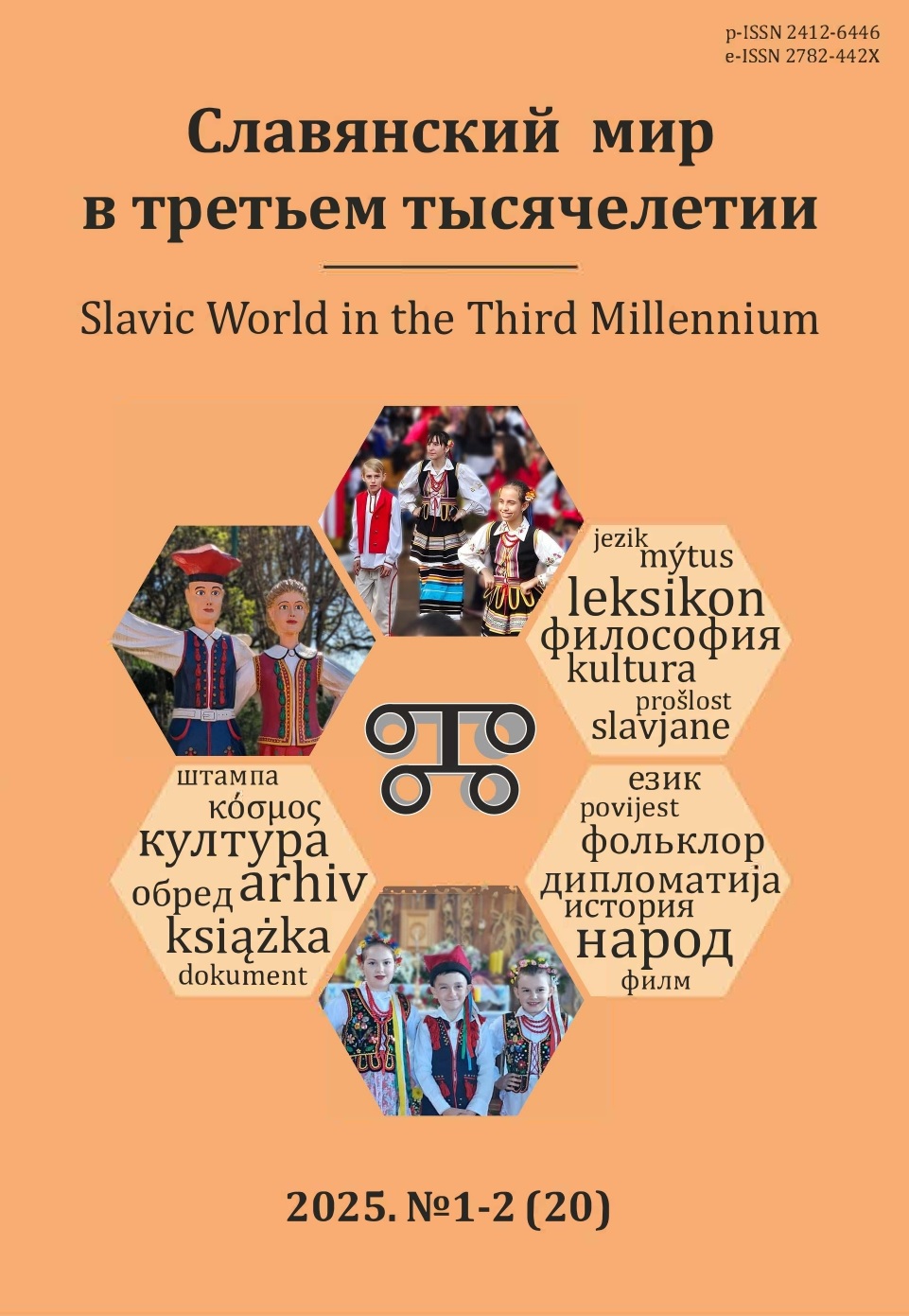Spatial Model of the World in the Ethnic Identity of the Thracian Greeks of Crimea
DOI:
https://doi.org/10.31168/2412-6446.2025.20.1-2.10Keywords:
Thracian Greeks of Crimea, ethnic identity, model of the world, picture of the world, local ethnic communityAbstract
The article focuses on the perception of the territory by representatives of the local ethnic community of Greeks of Chernopolye village (Crimea) in the context of their ethnic identity. As a result of their departure from Thrace in 1830 after the Treaty of Adrianople, the community lost contact with their homeland. The need to address the initially alien landscape expressed itself in symbolic developments once the community began to degenerate without connection “with its land”. The article examines two stages of sacralization of landscape caused by the forced migrations, loss of connection with native land and the resulting problems with identity. The first stage is represented by the search for “one’s own” land, where the mediators were the spiritual patrons of the community, st. Constantine and Helena, who “chose” a certain water source. The symbolic boundaries of the area were designated by four sources, the degree of significance of which corresponds to the symbolism of the cardinal directions. After this, a chapel (konak) was erected in the symbolic center of the village, later the Church of st. Constantine and Helena. The vertical model of the world was realized in connection with the pre-Christian ritual practices of the community: the bottom of the World Axis corresponds to the sacrificial pit in the church yard. The second stage of development of the village of Chernopolye occurred after the return of part of the community from deportation in the second half of the 20th century, when the microcosm gradually acquired three Centers, and beyond its borders the idea of “foreign” space, the other world (“devil's bridge”) was actualized. The article establishes the current existence of an internal “center” for community members (against the background of the village's multi-ethnicity), conditioned by the location of ancient icons: formed once as a result of the closure of the church, this center not only did not cease to exist over time, but under the influence of collective memory became integrative for the community. The folklore picture of the world is considered, which reflects multiple identities inherited from the times of the Byzantine Empire: on the one hand, local, on the other hand – Roman identity with the center in Constantinople; it is revealed that in the folk songs of the Chernopolye residents, the spatial model of the world is especially clearly manifested in liminal symbolism.
Funding
This research was supported by the Russian Science Foundation (project No 23-78-01227, https://rscf.ru/project/23-78-01227/) and took place in V. I. Vernadsky Crimean Federal University.
Received 24 April 2025
Revised 20 June 2025
Accepted 25 June 2025
For citation Kozhukhovskaya Yu. V., 2025. Spatial Model of the World in the Ethnic Identity of the Thracian Greeks of Crimea. Slavic World in the Third Millennium, 20 (1–2), pp. 187–203. https://doi.org/10.31168/2412-6446.2025.20.1-2.10



